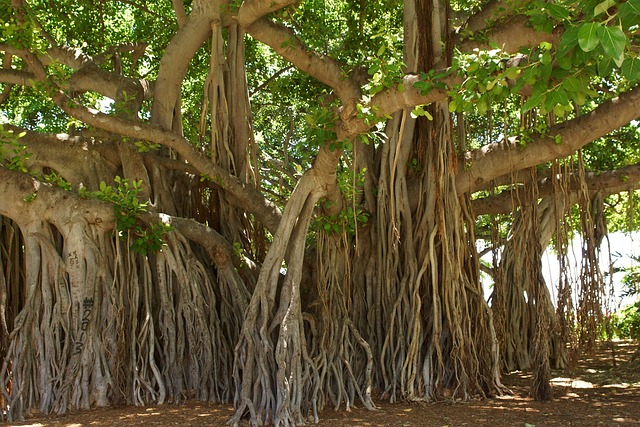
Trees are an essential part of the environment, providing shade, purifying the air, and enhancing the beauty of landscapes. In Pakistan, where temperatures can be extreme, large and fast-growing trees are highly beneficial for creating a cooler environment and preventing soil erosion. Whether for residential areas, parks, or farmlands, planting trees that grow quickly and reach great heights can provide long-term benefits. This blog explores some of the best large, fast-growing trees suitable for Pakistan’s climate and soil conditions.
Table of Contents
ToggleBenefits of Large and Fast-Growing Trees
Before discussing specific tree species, let’s look at why large and fast-growing trees are advantageous:
- Provide Shade: These trees help cool the surroundings, reducing the impact of the scorching summer heat.
- Improve Air Quality: Trees absorb carbon dioxide and release oxygen, improving air quality.
- Reduce Soil Erosion: Their extensive root systems help prevent soil erosion, especially in hilly and flood-prone areas.
- Enhance Biodiversity: Large trees support birds, insects, and other wildlife, promoting biodiversity.
- Increase Property Value: Homes with well-established trees often have higher property values.
Best Large, Fast- growing tress in Pakistan
Now, let’s explore some of the best large fast-growing trees in Pakistan.
Sukh Chain (Pongamia pinnata) (سکھ چین)
Sukh Chain, also known as Indian Beach, is a fast-growing tree commonly found in urban areas of Pakistan. It is known for its wide canopy and lush green leaves.
- Growth Rate: Fast
- Maximum Height: 50-80 feet
- Ideal Conditions: Thrives in full sun and well-drained soil
- Uses: Provides shade, fixes nitrogen in the soil, and is drought-resistant.
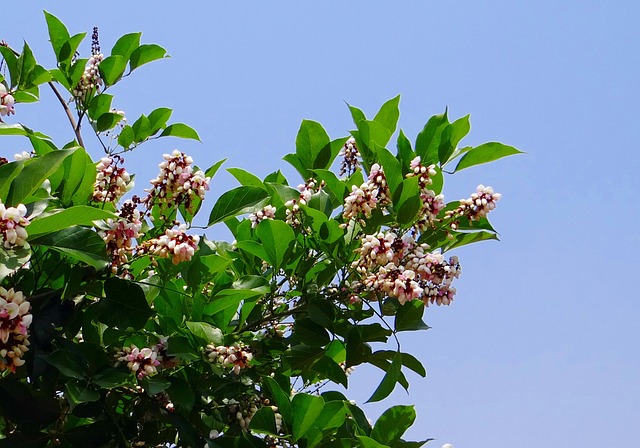
Shisham (Dalbergia sissoo) (شیشم)
Shisham, or Indian Rosewood, is a valuable timber tree that grows rapidly and reaches great heights. It is commonly found in Punjab and Sindh.
- Growth Rate: Fast
- Maximum Height: 50-80 feet
- Ideal Conditions: Prefers well-drained soil and moderate to high rainfall
- Uses: Used for furniture, shade, and windbreaks.
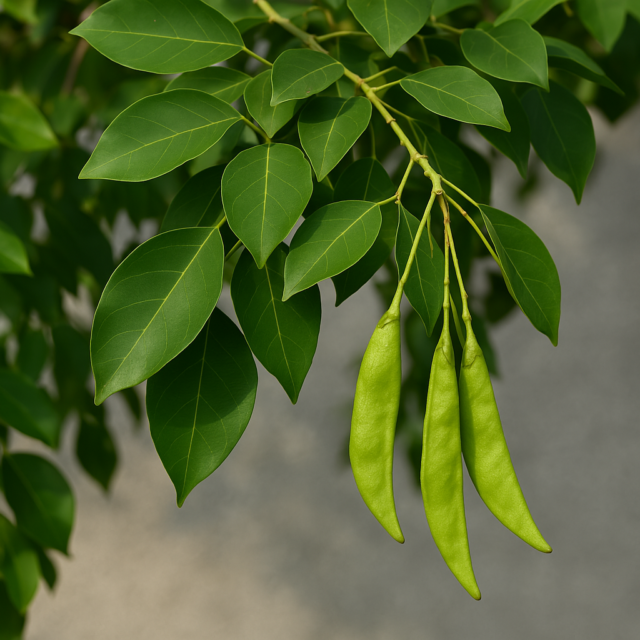
Neem (Azadirachta indica) (نیم)
Neem is one of the most beneficial trees due to its medicinal properties. It grows quickly and provides ample shade.
- Growth Rate: Fast
- Maximum Height: 40-65 feet
- Ideal Conditions: Drought-resistant and thrives in a variety of soil types
- Uses: Used in traditional medicine, air purification, and pest control.

Amaltas (Cassia fistula) (املتاس)
Amaltas, also called the Golden Shower Tree, is known for its beautiful yellow flowers. It is widely planted along roadsides and in parks.
- Growth Rate: Fast
- Maximum Height: 30-40 feet
- Ideal Conditions: Requires full sunlight and well-drained soil
- Uses: Ornamental purposes, medicinal applications, and shade provision.
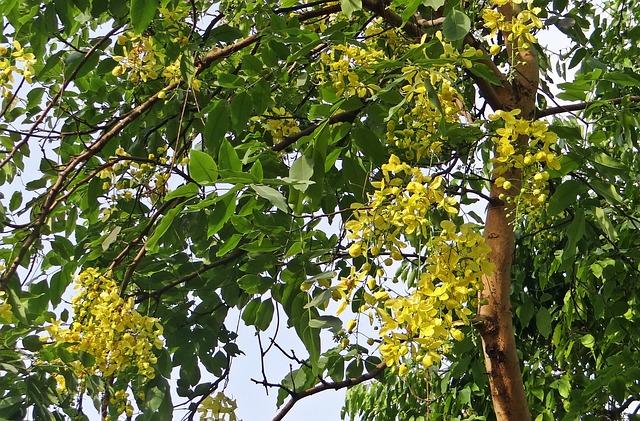
Eucalyptus (Eucalyptus camaldulensis) (سفیدہ)
Eucalyptus is one of the fastest-growing trees in Pakistan, often planted in large-scale forestry projects.
- Growth Rate: Very fast
- Maximum Height: 100-150 feet
- Ideal Conditions: Thrives in arid and semi-arid regions
- Uses: Timber, essential oils, and windbreaks.

Poplar (Populus deltoides) (چنار )
Poplar is extensively grown in Pakistan due to its rapid growth and commercial value.
- Growth Rate: Extremely fast
- Maximum Height: 50-80 feet
- Ideal Conditions: Prefers moist soil and full sun
- Uses: Timber, pulp production, and shade.

Kikar (Acacia nilotica) (کیکر)
Kikar, or Babul, is a resilient tree that grows quickly and is commonly found in rural areas.
- Growth Rate: Fast
- Maximum Height: 65-82 feet
- Ideal Conditions: Can grow in dry, arid regions
- Uses: Timber, fodder for livestock, and medicinal purposes.

Banyan (Ficus benghalensis) (برگد)
Banyan is one of the largest trees in the world, known for its aerial roots and wide canopy.
- Growth Rate: Moderate to fast
- Maximum Height: 60-100 feet
- Ideal Conditions: Prefers warm climates and deep, well-drained soil
- Uses: Provides shade, supports biodiversity, and has religious significance.

Gulmohar (Delonix regia) (گل مہر)
Gulmohar, or the Flame Tree, is famous for its bright red-orange flowers and fast growth.
- Growth Rate: Fast
- Maximum Height: 30-50 feet
- Ideal Conditions: Requires full sun and well-drained soil
- Uses: Ornamental value, shade, and beautification of urban spaces.
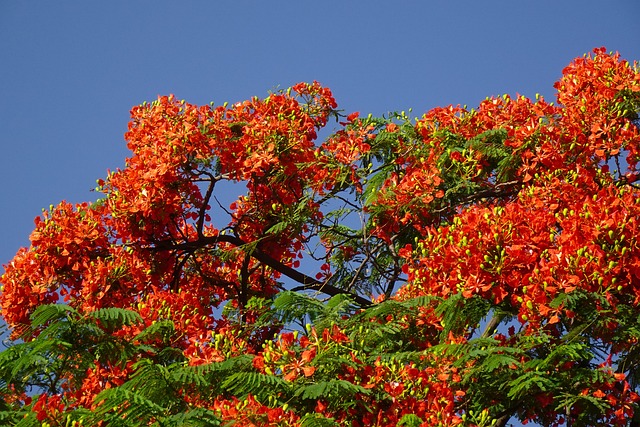
Mulberry (Morus alba) (شہتوت)
Mulberry trees are commonly grown for their fruit and shade, growing rapidly in Pakistan.
- Growth Rate: Fast
- Maximum Height: 40-50 feet
- Ideal Conditions: Adapts to different soil types and climates
- Uses: Fruit production, fodder, and traditional medicine.

How to Grow Large Fast-Growing Trees Successfully
To ensure the healthy growth of these trees, follow these simple guidelines:
- Choose the Right Tree: Consider the climate, soil type, and space availability before planting.
- Prepare the Soil: Use organic matter to improve soil fertility and drainage.
- Water Regularly: Newly planted trees need frequent watering until they establish deep roots.
- Prune as Needed: Remove weak or dead branches to encourage strong growth.
- Protect from Pests: Neem oil or organic pesticides can help keep insects away.
Planting large fast-growing trees in Pakistan is an excellent way to combat environmental challenges, provide shade, and enhance urban and rural landscapes. Trees like Neem, Shisham, Eucalyptus, and Gulmohar not only grow quickly but also offer multiple benefits to the ecosystem. By choosing the right trees and taking proper care, we can contribute to a greener, healthier future for Pakistan.
If you are planning to plant trees, consider selecting species that best suit your location and needs. Let’s work together to make Pakistan greener and more sustainable!
